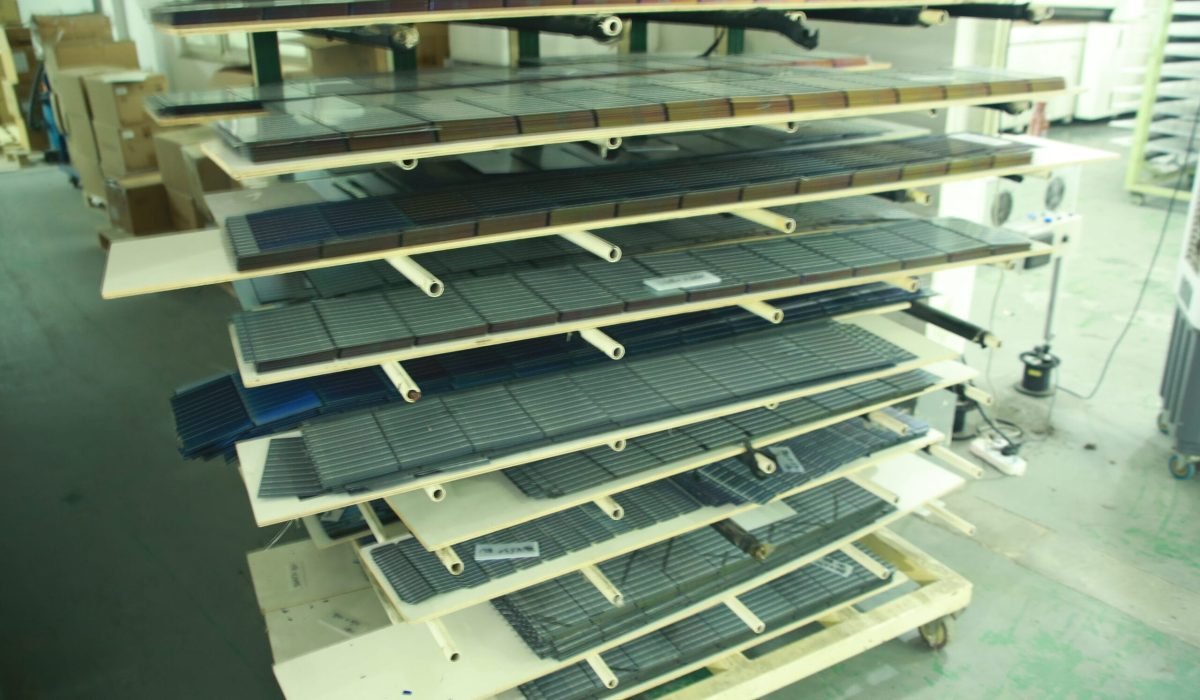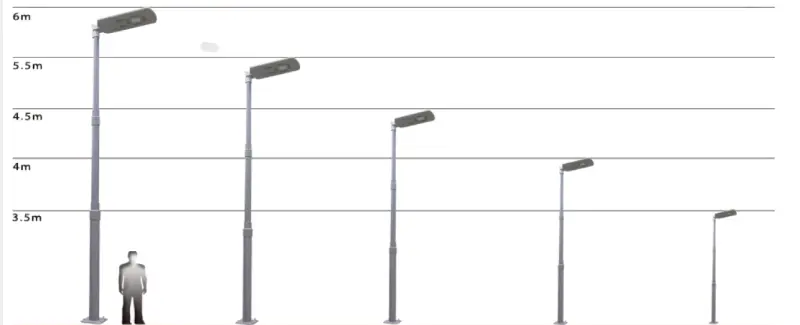In the last decade, I’ve overseen over 100 solar street lighting projects across East and Central Africa. One clear trend stands out: governments are shifting decisively toward all-in-one solar street lights—especially for rural road development. Why? Because these integrated systems solve three of the continent’s most persistent infrastructure challenges: cost control, speed of deployment, and long-term maintenance.
If you’re a procurement officer, infrastructure consultant, or EPC decision-maker evaluating your next rural lighting tender, this article will give you the real-world reasons why all-in-one solar street lights are dominating Africa’s public lighting landscape—and how they can help you deliver faster, smarter, and more durable projects.
What Are All-in-One Solar Street Lights, and How Do They Work?
All-in-one solar street lights are integrated units that combine the LED light, solar panel, battery, controller, and motion sensor into a single, compact fixture.
Unlike traditional solar systems that rely on multiple components and external wiring, these units are:
- Pre-assembled and factory-tested
- Mounted easily on standard poles (no trenching or cabling)
- Powered by high-efficiency lithium batteries
- Auto-adjusting to ambient light and motion
This design eliminates most installation headaches and slashes long-term operating costs—a game-changer in remote regions where logistics are tough, technical expertise is limited, and grid access is unreliable.
Why Are All-in-One Solar Street Lights Ideal for Rural Roads in Africa?
Because rural roads demand fast deployment, minimal maintenance, and cost-effective coverage—all-in-one solar lights deliver on every front.
Here’s what makes them ideal:
1. Zero Trenching, Zero Cabling
Most rural projects don’t have access to grid power or underground ducting. With all-in-one lights, you can skip trenching, skip wiring, and cut labor by 50% or more.
2. Lightning-Fast Installation
On a recent county road project in Western Kenya, we installed 60 poles in just 3 days with a 4-man team—less than one-third the time it would’ve taken using traditional solar lighting systems.
3. Solar Independence
In places where the grid fails often or doesn’t exist, the built-in solar panel and lithium battery guarantee up to 3–5 days of lighting autonomy—critical for rural safety and visibility.
4. Low Maintenance
There are no inverters, underground cables, or external batteries to fail. Routine cleaning and occasional battery replacement after 5–7 years is all you need.
What Procurement Pain Points Do All-in-One Solar Lights Solve?
If you’ve managed public infrastructure projects in Africa, you know the biggest challenges aren’t just technical—they’re logistical, political, and operational.
Let’s break down how all-in-one systems tackle the five biggest pain points I hear from government and EPC clients:
| Pain Point | Traditional Solar Systems | All-in-One Solution |
|---|---|---|
| High CAPEX | Multiple parts and labor inflate costs | Integrated design cuts CAPEX by 25–40% |
| Installation Delays | Trenching, cabling, transformer siting | Pre-assembled; install in <30 mins |
| Remote Site Logistics | Multiple components = multiple transport trips | Single shipment, low weight/volume |
| Vandalism & Theft | Exposed batteries and cables | Concealed, tamper-proof design |
| Maintenance Costs | Multiple failure points over 3–5 years | Minimal O&M with lithium battery system |
Key takeaway: With fewer moving parts and faster results, all-in-one solar lights let you focus on impact, not firefighting.
How Do All-in-One Solar Lights Perform in Harsh African Environments?
All-in-one solar street lights are purpose-built to endure dust, heat, humidity, and voltage instability—making them ideal for Africa’s diverse terrains.
From Uganda’s swampy floodplains to Kenya’s arid northern zones, I’ve seen these lights deliver consistent performance where conventional systems failed.
Field-Proven Durability:
- IP65–IP67 rated casings for water and dust protection
- Anti-corrosion aluminum alloys withstand coastal and humid climates
- Battery management systems (BMS) prevent overcharge and discharge
Real-World Example:
In South Sudan’s Aweil County, a UN-funded rural lighting program replaced traditional setups with all-in-one units. After 24 months in extreme conditions, 95% of the lights were still operating without issue—a milestone in low-touch sustainability.
How Do All-in-One Solar Street Lights Cut Project Costs?
Cost isn’t just about equipment—it’s about the total lifecycle of your project.
All-in-one lights slash costs across three dimensions:
1. Lower Procurement Costs
Fewer SKUs. Less packaging. No cross-border clearance for bulky inverters or AC accessories.
2. Cheaper Transport & Handling
One 40-ft container fits over 300 units, compared to only 120–150 traditional systems with external panels and batteries.
3. Minimal O&M Costs
No scheduled battery checks or component testing for the first 5 years in most Tier 1 models.
Are There Any Downsides to All-in-One Solar Street Lights?
Yes—and it’s important to address them with clear specs and quality control.
While the advantages outweigh the trade-offs, here are the key limitations:
- Fixed Orientation: Since the panel is built-in, the tilt and angle may not be optimal in all latitudes without adjustable brackets.
- Battery Capacity: Cheaper models often cut costs by using undersized lithium cells.
- Overheating Risk: In units without heat dissipation design, internal temperatures can degrade battery life.
Solution: Always specify adjustable mounts, confirm battery specs (LiFePO4 preferred), and partner with a vetted supplier who’s delivered in similar conditions.
What Should You Look for in a Quality All-in-One Solar Light?
Not all products are created equal. Avoid “factory price traps” and focus on specs that deliver in African field conditions.
Here’s a quick checklist I use for every procurement evaluation:
- ✅ LiFePO4 battery with ≥1500 charge cycles
- ✅ Mono-crystalline panel with ≥19% efficiency
- ✅ Motion sensor + auto-dimming features
- ✅ Minimum 3-year manufacturer warranty
- ✅ High-lumen output (≥160 lm/W) with optical lens
- ✅ IP66 rating minimum, IK08 impact protection
What’s the Procurement Strategy for Maximum Impact?
Think clusters, not scattered poles. Focus on visibility zones, not kilometers.
Procurement Tips:
- 🛑 Don’t spread 100 lights across 100 km. Concentrate 20–30 lights at known danger zones or high-traffic rural hubs.
- ✅ Use standardized pole height and spacing for easier logistics and uniform coverage.
- 🔄 Bundle O&M services with supplier contracts to ensure handover continuity.
Final Thoughts: Why It’s Time to Standardize All-in-One Solar Lighting in Rural Africa
After 15 years in this sector, I can say this with confidence: All-in-one solar street lights are no longer a niche solution—they are the new standard for rural public lighting.
Governments aren’t choosing them just because they’re cheaper. They’re choosing them because they work better, install faster, and maintain themselves—even where budgets, roads, and tools are limited.
If you’re building resilience, boosting safety, and lighting the path to economic growth in underserved regions, this is the system you should be specifying.
Let’s Talk Projects
Looking to evaluate options for your next rural road project? I’ve worked with county governments, UN contractors, and EPC firms across 9 countries—let’s align your specs with proven, field-tested models that deliver long-term results.
📩 Reach out for a free project brief template and supplier evaluation checklist.





